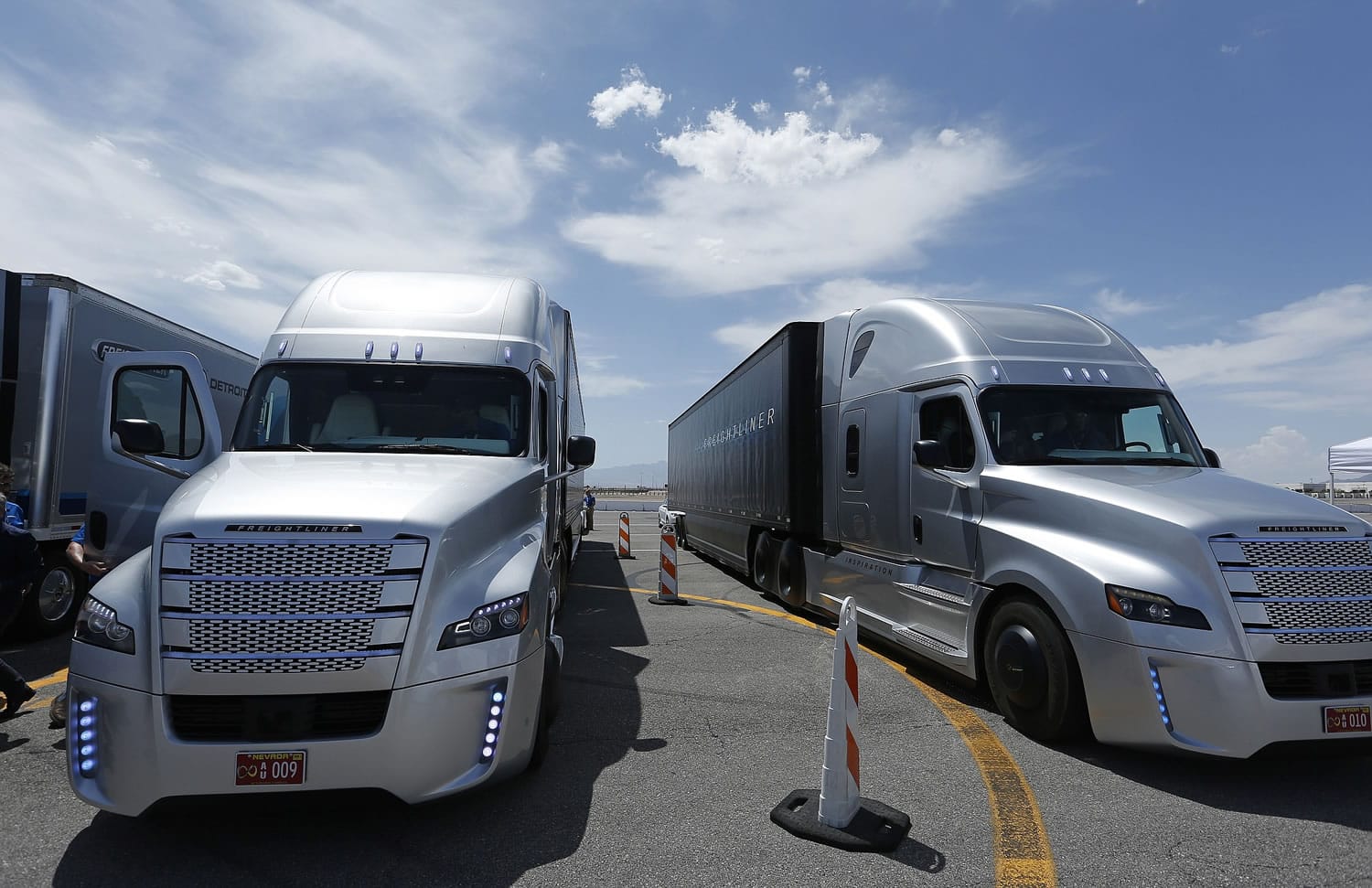LAS VEGAS — Although much attention has been paid to autonomous vehicles being developed by Google and traditional car companies, one truck maker believes that automated tractor-trailers will be rolling along highways before self-driving cars are cruising around the suburbs.
On freeways there are no intersections, no red lights, no pedestrians, making it a far less complex trip, said Wolfgang Bernhard, a management board member of Germany’s Daimler AG, at an event in Las Vegas.
Daimler Trucks North America showed off a self-driving big rig on the road atop Hoover Dam Tuesday night, although in this case it had a driver with his hands on the wheel the whole time.
But it will be years before an autonomous truck hits the highway for anything more than tests and demonstrations, the company says.
There are many advantages to autonomous big rigs, which use a combination of features that already are available on high-end passenger cars. A computer-controlled truck never gets drowsy. And eventually a fully autonomous rig could cut expensive driver costs for companies.
Still, there likely will always be a human behind the wheel, more as a logistics manager and to take over in emergencies.
“The human brain is still the best computer money can buy,” said Daimler Trucks North America LLC CEO Martin Daum on Wednesday before the company offered rides in the truck to members of the media.
The industry is watching the developments, said Ted Scott, director of engineering for American Trucking Associations, which represents trucking companies.
He questioned what the economic benefit would be, with companies paying a driver’s salary on top of the new technology, even given the potential safety advantages.
“Being a tired driver is not as big of a problem as it’s often made out to be,” Scott said.
The group representing truck drivers — the Owner Operator Independent Drivers Association — isn’t sure the technology would affect driving jobs, noting the abundance of job openings now and the industry’s high turnover.
“We mainly have questions,” said Norita Taylor, the group’s director of public affairs, citing current laws regulating how long a driver can drive and prohibitions on texting while driving.
Al Pearson, Daimler Trucks’ chief engineer of product validation, said all the same laws still apply: No texting, no napping while in motion.
“We need an attentive driver,” he said, with the technology removing some of the stress.
Legal and philosophical questions stand in the way, as does perfecting the technology that links radar sensors and cameras to computers that can brake and accelerate the truck and handle any freeway situation.
Public perception of a self-driving car will also be a hurdle. Daum said society might forgive a number of deaths caused by tired truck drivers at the wheel but they would never forgive a single fatal crash blamed on a fully automated big rig.
For now four states, including Nevada, and the District of Columbia, certify testing of autonomous vehicles on public roads as long as a human driver is behind the wheel, and a few others are keen on allowing the tests.
Bernhard said more states need to allow testing of autonomous driving before fleets of self-driving semi-trucks fill U.S. freeways and interstates anytime soon.
The company is still far from taking customer orders for the trucks.
“We’re just getting people inspired,” he said.




